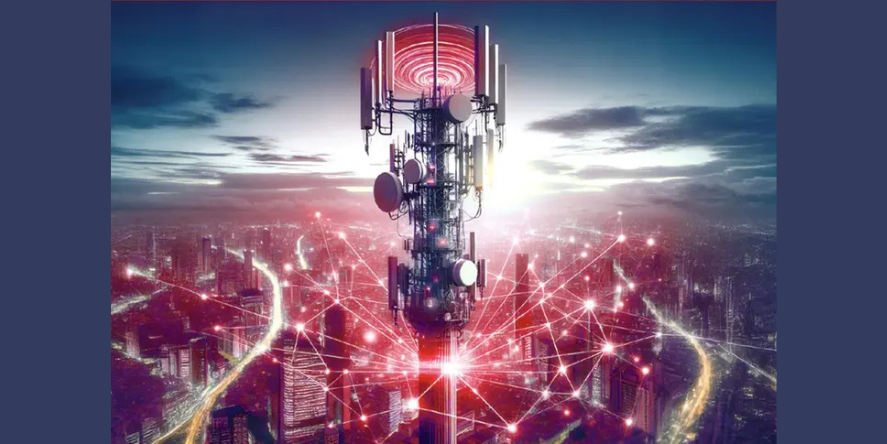The emergence of the internet of things (IoT) in the retail industry due to the adoption of emerging technologies can be considered a boon to the industry due to the various business models and revenue opportunities it creates. Post-pandemic, IoT in the retail industry has grown rapidly, and heavy emphasis is on offering immersive and customized modes of interaction to end-users.
With the emergence of e-commerce, the retail industry has seen a tremendous shift toward enhanced customer experiences. Retail companies across the globe are investing heavily in building their IT infrastructure to stay competitive in the market. IoT in retail is also expected to play a vital role across various applications, such as warehouse management, supply chain, inventory management, asset tracking, etc.
Advancements in various technologies such as artificial intelligence (AI), autonomous mobile robots, wearables, big data, predictive analytics, mobility platforms, edge intelligence, sensor fusion, LiDAR, radar, and advanced camera sensors and algorithms have paved the way for the creation of effective interfaces and connectivity between goods and humans. The following are the key technology trends that are expected to impact the retail industry in the near term.
IoT Technologies for Enhanced Supply Chain Management
IoT in retail is evolving rapidly with the introduction of emerging communication technologies, wireless sensors, big data, sensor fusion, data analytics, and warehouse robots such as autonomous mobile robots and AI, among others. IoT in the retail industry encourages new opportunities such as Retail as a Service (RaaS), where traditional shopping has moved digital. With the emergence of various e-commerce retail companies, RaaS has served as a cross-section, bringing physical stores and digital shopping together, creating a great value for retail manufacturers, retailers, and end-users. Manufacturers also are trying to leverage IoT in their supply chains to improve productivity and resource efficiency. In the manufacturing space, supply chain management (SCM) is a segment where many strategic decisions are made.
Leading manufacturers across the world are implementing IoT technologies in supply chain facilities. They can share information about forecasted product demand to raw material suppliers and product manufacturers through collaborative planning, forecasting, and replenishment (CPFR)—a supply chain integration approach. Similarly, suppliers and product manufacturers can meet stakeholders’ requirements, leading to continuous production. IoT in retail SCM will also impact the overall utilization of resources and data management among raw material developers, suppliers, and end-users. IoT in SCM will also play a key role in material procurement systems, which will ease the supply chain between raw material providers, manufacturers, and retailers.
IoT-based CPFR can be a profitable solution for companies that procure raw materials, wherein collaborations among retail industry participants can be encouraged and overall cost reductions can be realized.
Technology Advancements Encouraging Development of Predictive Diagnostics Solutions and Predictive Equipment Maintenance in the Retail Industry
Predictive diagnostics solutions will make predictive maintenance in the retail industry a reality. Predictive maintenance can detect issues in the key components of equipment and offers real-time notifications to manufacturers and the entire supply chain about product repair/replacement. Predictive diagnostics solutions predict and provide alerts about the health/condition/shelf-life/safety monitoring of various products, which leads to efficient maintenance and planning.
Retail giants want to implement predictive diagnostics solutions as they reduce overall operations costs across the value chain. Retail companies, fleet and supply chain management companies, and others in the retail ecosystem are considering using these solutions for effective equipment maintenance because they prevent unexpected operational breakdowns by predicting system/component failures.
Adept Cybersecurity Solutions to Address Real-world Cyber Threats
In the retail ecosystem, security is as important as safety. The generation of large amounts of data has led to the leakage of sensitive information such as financial data, supply chain information, and customer data. As the number of connected devices rises across the retail value chain, immense amounts of data exchanges are expected to occur and lead to the need for improved security and privacy control solutions. Point of sale (POS) systems can be expected to have high levels of risk because they include the use of predominantly unencrypted data.
These systems are highly prone to malware and other forms of cyberattacks as they collect information daily from transactions. Retail companies should ensure the implementation of adept cybersecurity solutions that will protect their data and infrastructure. Research and development (R&D) in retail cybersecurity should be their key focus in tackling cybersecurity challenges.
Biometric authentication, two-factor authentication, and intruder detection solutions can be investigated. Also, cybersecurity can be optimally integrated by creating standards and guidelines by various government bodies in collaboration with retail companies. Standards and regulations play an important role in retail IoT expansion. Implementing regulatory guidelines will result in the establishment of robust cybersecurity suites and management solutions in the retail industry.
Production shutdowns, semiconductor shortages, and supply chain disruptions due to the pandemic and recent global events have taken a toll on various industries. However, technologies such as IoT and AI will play an instrumental role in the revival of the retail industry and the supply chain in inventory management, delivering a better business impact.
By addressing the critical pain points faced by the retail industry in manufacturing and supply chain management, IoT, predictive diagnostics, and cybersecurity technology trends are expected to aid retail giants to mitigate risks and restoring efficiency in supply chain management.

Authored by: Jabez Mendelson
Research Manager TechVision, Frost & Sullivan
The Blog received on Mail










